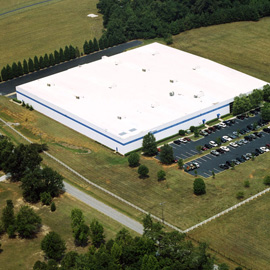Stretch Film Questions You Might Find Yourself Asking...
What Is Prestretch Film?
A process that allows stretch film to be stretched before being applied. The stretch film is prestretched by two rollers. The second rollers rotational speed is quicker than the first, thus stretching the film between them.
Why Use Prestretch Stretch Film?
By stretching the film, the tensile strength of the film increase so that it becomes drastically stronger.
After the film is stretched it wants to return it to its original form. The more you use this prestretching process, the worst the film memory becomes. When the stretch film is applied to a load with no force to load, quickly it will be able to detect that the film has tightened due to its memory as it tries to return to its original size.
Stretch film memory is what distinguishes stretch film from other means of packaging unitizing. Settling that can happen during shipment can loosen other methods of unitizing products. Stretch film memory takes up the slack and continues to secure the load during shipment. Your cost of stretch film is reduced when it is prestreched compared to stretch wrapping a load with film that has not been. Using just hand or machine to add tension to stretch film does not provide uniform stretch and is not able to have reliable performance. This type of stretching can lead to intermittent load failures.
Benefits of Pre-Stretched Film: Better cling, core extension, better force, lighter weight, and reinforced edges.
How Is Film Prestretched ?
When film is stretched mechanically between the film carriage rollers due to the gearing ratio and diameter of the rollers it is prestretched.
What Is Post Stretch ?
The stretch in the film produced by the film tension between the film carriage and the load being wrapped, which is also known as force to load.
How To Post Stretch ?
The amount of film force applied is directly proportional to Post stretch. Increase film force and the post stretch will be increase.
What Is Film Force ? (Film Tension)
The tension created in stretch film due to the films attempt to return to its original state after having been stretched.
Why Have Film Force ?
Low film force restrains the film from returning back to its original state.
How To Create Film Force ?
Film Force is formed by creating tension between the load and the film carriage that can be produced both mechanically and electrically. Electrically reducing the speed of the film leaving the carriage compared to what the load requires increases the stretch film force which causes the film to stretch between the load and the carriage. Mechanically postpones the dancer arm which measures the speed demand of the load will reduce the film feed leaving the carriage which increases the force.
What Is Film Feed ?
Provide the stretch film required to wrap a load while keeping the tension of the film constant. The carriage must vary the supply of film with the demand of the load while the load revolves. A dancer roller reads the demand of the load.
How To Control Film Feed ?
The stretch wrappers dancer arm rotates a cam shaft which sends a varying signal to the drive board then it sends varying voltage to the motor. The larger the dancer size the larger the output voltage. The larger the output voltage means the faster the film is fed.
What is Film Recovery?
The extent to which a material returns to its original shape or size after having been deformed or subjected to stretch.
What is Force To Load?
Force to Load refers to the test used to measure the strength of the stretch film's containment force. This test is often used to illustrate the effectiveness of thinner gauge films. A force to load test is measured by stretching the stretch wrap onto a pallet after it is wrapped. This test allows the user to see if the integrity of the load has been compromised. Typically we see force to load of 15-26lbs. This test is often used to illustrate the effectiveness of thinner gauge films.
Force to Load can vary by:
- Number of Wraps
- Gauge being Used
- Force to load setting on machine
- Pre-Stretch level of the machine.
What are the Criteria for Film Audits?
- Pre-Stretch = Yield
- Force-to-Load = Containment
- Cut and Weigh = Cost per Load
Determining Roll Weight
You can determine roll weight by the following formula.
Roll Weight = Width x Length x Gauge / 2,500
Example: 20 x 60 x 80 = 96,000/2,500 = 38.4lbs.
How do I convert Micronsto Gauge? (AndGauge to Micron?)
Microns to Gauge = 4 x (micron value) = gauge
Gauge to Micron = 4 / (gauge value) = micron






